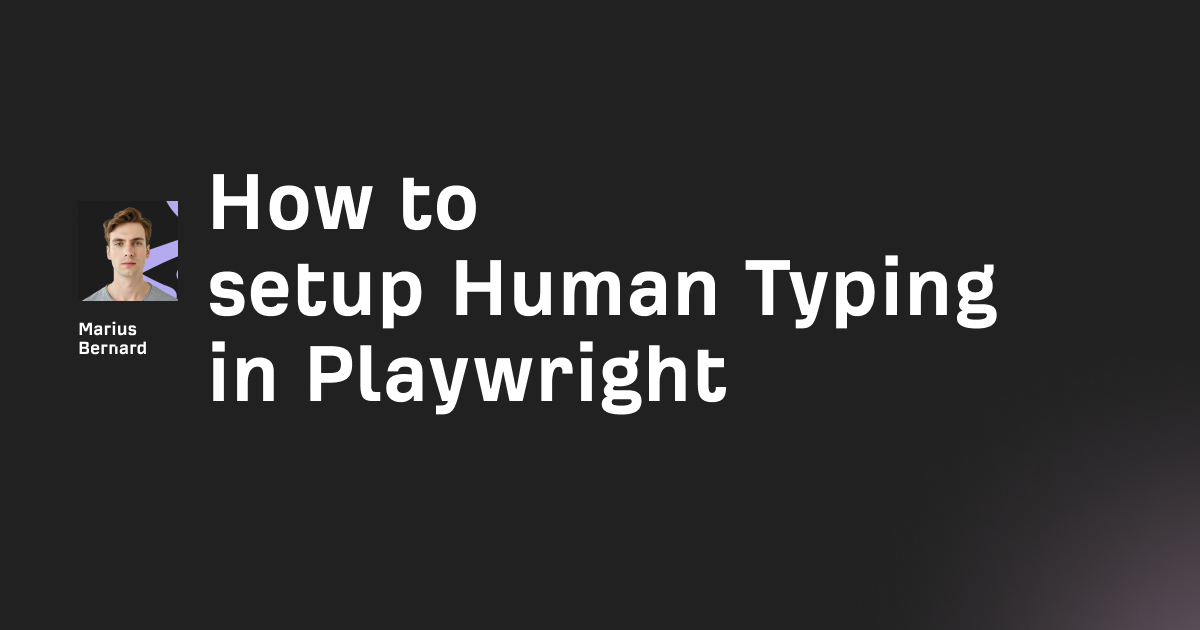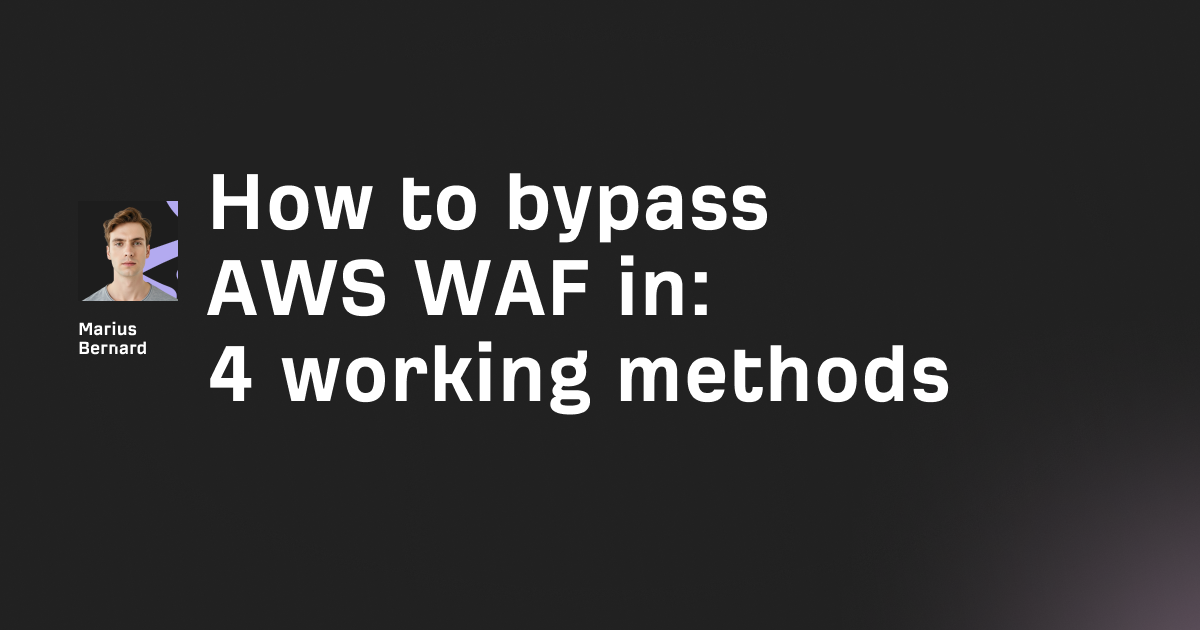WebGL fingerprinting uses your GPU's unique rendering behavior to track you across websites—even when you clear cookies, use incognito mode, or switch VPNs. This guide explains exactly how this hardware-level tracking works and provides 8 practical bypass techniques that actually work in production environments.
What is WebGL Fingerprinting?
WebGL fingerprinting is a browser tracking technique that creates a unique identifier by analyzing how your device's graphics processing unit (GPU) renders 3D graphics through the WebGL JavaScript API.
Unlike cookies that you can delete or IP addresses that you can mask with proxies, WebGL fingerprinting operates at the hardware level. Every GPU produces microscopic variations in floating-point calculations, shader compilation, and pixel rendering. These tiny differences—invisible to humans—become your digital signature.
Think of it like handwriting analysis. Two people writing the same sentence produce subtly different results based on muscle memory, pen pressure, and hand positioning. Your GPU's "handwriting" is similarly unique.
How WebGL Fingerprinting Works: The Complete Technical Breakdown
Websites use a multi-step process to extract your GPU fingerprint. Understanding each step is essential for building effective bypasses.
Step 1: Canvas and Context Initialization
The fingerprinting script creates a hidden canvas element and requests a WebGL rendering context:
const canvas = document.createElement('canvas');
canvas.width = 256;
canvas.height = 256;
canvas.style.display = 'none';
const gl = canvas.getContext('webgl') ||
canvas.getContext('experimental-webgl') ||
canvas.getContext('webgl2');
The canvas never appears on screen. It runs silently in the background while you browse.
Step 2: GPU Information Extraction
Next, the script queries your GPU's hardware specifications through the debug extension:
function extractGPUInfo(gl) {
const info = {
vendor: gl.getParameter(gl.VENDOR),
renderer: gl.getParameter(gl.RENDERER),
version: gl.getParameter(gl.VERSION),
shadingVersion: gl.getParameter(gl.SHADING_LANGUAGE_VERSION)
};
// The real gold: unmasked GPU details
const debugInfo = gl.getExtension('WEBGL_debug_renderer_info');
if (debugInfo) {
info.unmaskedVendor = gl.getParameter(
debugInfo.UNMASKED_VENDOR_WEBGL
);
info.unmaskedRenderer = gl.getParameter(
debugInfo.UNMASKED_RENDERER_WEBGL
);
}
return info;
}
This reveals your exact GPU model—something like "NVIDIA GeForce RTX 4090" or "Apple M3 Pro GPU"—which immediately narrows the tracking pool.
Step 3: Capability Parameter Collection
The script then probes your GPU's technical limits. These values vary based on architecture, memory, and driver version:
function collectCapabilities(gl) {
return {
maxTextureSize: gl.getParameter(gl.MAX_TEXTURE_SIZE),
maxVertexAttribs: gl.getParameter(gl.MAX_VERTEX_ATTRIBS),
maxViewportDims: gl.getParameter(gl.MAX_VIEWPORT_DIMS),
maxCubeMapSize: gl.getParameter(gl.MAX_CUBE_MAP_TEXTURE_SIZE),
maxRenderbufferSize: gl.getParameter(gl.MAX_RENDERBUFFER_SIZE),
maxVertexUniformVectors: gl.getParameter(gl.MAX_VERTEX_UNIFORM_VECTORS),
maxFragmentUniformVectors: gl.getParameter(gl.MAX_FRAGMENT_UNIFORM_VECTORS),
maxVaryingVectors: gl.getParameter(gl.MAX_VARYING_VECTORS),
maxTextureImageUnits: gl.getParameter(gl.MAX_TEXTURE_IMAGE_UNITS),
aliasedLineWidthRange: gl.getParameter(gl.ALIASED_LINE_WIDTH_RANGE),
aliasedPointSizeRange: gl.getParameter(gl.ALIASED_POINT_SIZE_RANGE),
maxCombinedTextureUnits: gl.getParameter(gl.MAX_COMBINED_TEXTURE_IMAGE_UNITS),
extensions: gl.getSupportedExtensions()
};
}
Each GPU family exposes different maximum values. An RTX 4090 reports different limits than an Intel UHD 630.
Step 4: Shader Compilation and Rendering
Here's where the real fingerprinting magic happens. The script renders a test scene designed to expose GPU-specific quirks:
const vertexShaderSource = `
attribute vec2 position;
attribute vec3 color;
varying vec3 vColor;
void main() {
gl_Position = vec4(position, 0.0, 1.0);
vColor = color;
}
`;
const fragmentShaderSource = `
precision highp float;
varying vec3 vColor;
uniform float seed;
void main() {
// These calculations produce slightly different
// results on different GPUs due to floating-point
// precision variations
float r = sin(vColor.r * seed * 12.9898) * 43758.5453;
float g = sin(vColor.g * seed * 78.233) * 43758.5453;
float b = sin(vColor.b * seed * 37.719) * 43758.5453;
gl_FragColor = vec4(
fract(r) * 0.5 + 0.25,
fract(g) * 0.5 + 0.25,
fract(b) * 0.5 + 0.25,
1.0
);
}
`;
Different GPUs handle floating-point operations with subtle precision differences. These microscopic variations in the rendered output create unique signatures.
Step 5: Pixel Data Extraction and Hashing
Finally, the rendered image is read back and converted to a hash:
function extractFingerprint(gl, canvas) {
// Read pixel data from the rendered scene
const pixels = new Uint8Array(canvas.width * canvas.height * 4);
gl.readPixels(
0, 0,
canvas.width, canvas.height,
gl.RGBA,
gl.UNSIGNED_BYTE,
pixels
);
// Generate a hash from the pixel data
let hash = 0;
for (let i = 0; i < pixels.length; i++) {
hash = ((hash << 5) - hash) + pixels[i];
hash = hash & hash;
}
return hash.toString(16);
}
The combination of hardware parameters and pixel data creates a fingerprint unique to your specific GPU, driver version, and system configuration.
Why Traditional Bypass Methods Fail
Most anti-fingerprinting browser extensions use JavaScript hooks to intercept WebGL calls. These approaches have fundamental weaknesses.
The Consistency Paradox
Random spoofing creates detectable inconsistencies. If your browser claims to have an RTX 4090 but renders like integrated graphics, anti-bot systems flag the mismatch instantly.
Modern detection code looks for these contradictions:
function detectSpoofing() {
const gl = document.createElement('canvas').getContext('webgl');
const ext = gl.getExtension('WEBGL_debug_renderer_info');
if (!ext) return { spoofed: true, reason: 'extension_blocked' };
const renderer = gl.getParameter(ext.UNMASKED_RENDERER_WEBGL);
const maxTexture = gl.getParameter(gl.MAX_TEXTURE_SIZE);
// NVIDIA cards typically support 32768, Intel integrated is 16384
if (renderer.includes('NVIDIA') && maxTexture < 32768) {
return { spoofed: true, reason: 'capability_mismatch' };
}
// Check if getParameter has been monkey-patched
if (gl.getParameter.toString() !== 'function getParameter() { [native code] }') {
return { spoofed: true, reason: 'api_modified' };
}
return { spoofed: false };
}
The Rendering Verification Problem
Even if you spoof the parameters correctly, the actual rendered output must match. Anti-bot systems render test scenes and compare results against known GPU signatures:
function verifyRenderConsistency() {
const hash1 = renderTestSceneAndHash();
// Wait and render again
await new Promise(r => setTimeout(r, 100));
const hash2 = renderTestSceneAndHash();
// Noise injection causes different hashes each time
if (hash1 !== hash2) {
return { consistent: false, reason: 'noise_detected' };
}
// Compare against known GPU signature database
if (!knownSignatures.includes(hash1)) {
return { consistent: false, reason: 'unknown_signature' };
}
return { consistent: true };
}
8 Bypass Techniques That Actually Work in 2026
Technique 1: Deep Proxy-Based API Interception
Instead of simple function replacement, use JavaScript Proxies for deeper interception that's harder to detect:
(function() {
'use strict';
// Define a consistent profile
const profile = {
vendor: 'Google Inc. (Intel)',
renderer: 'ANGLE (Intel, Intel(R) UHD Graphics 620 Direct3D11 vs_5_0 ps_5_0, D3D11)',
params: {
3379: 16384, // MAX_TEXTURE_SIZE
34076: 16384, // MAX_CUBE_MAP_TEXTURE_SIZE
34024: 16384, // MAX_RENDERBUFFER_SIZE
34930: 16, // MAX_TEXTURE_IMAGE_UNITS
36347: 4096, // MAX_VERTEX_UNIFORM_COMPONENTS
36349: 4096, // MAX_FRAGMENT_UNIFORM_COMPONENTS
3386: new Int32Array([32768, 32768]) // MAX_VIEWPORT_DIMS
}
};
// Store original
const originalGetContext = HTMLCanvasElement.prototype.getContext;
// Create proxy handler
const glProxyHandler = {
get(target, prop) {
if (prop === 'getParameter') {
return new Proxy(target.getParameter.bind(target), {
apply(fn, thisArg, args) {
const param = args[0];
// Spoof known parameters
if (profile.params[param] !== undefined) {
return profile.params[param];
}
// Handle debug info extension
const debugExt = target.getExtension('WEBGL_debug_renderer_info');
if (debugExt) {
if (param === debugExt.UNMASKED_VENDOR_WEBGL) {
return profile.vendor;
}
if (param === debugExt.UNMASKED_RENDERER_WEBGL) {
return profile.renderer;
}
}
return fn.apply(target, args);
}
});
}
// Preserve native function appearance
const value = target[prop];
if (typeof value === 'function') {
return value.bind(target);
}
return value;
}
};
// Override getContext
HTMLCanvasElement.prototype.getContext = function(type, ...args) {
const ctx = originalGetContext.call(this, type, ...args);
if (ctx && (type === 'webgl' || type === 'webgl2' || type === 'experimental-webgl')) {
return new Proxy(ctx, glProxyHandler);
}
return ctx;
};
})();
This approach maintains the native function signature while intercepting calls at a deeper level.
Technique 2: Consistent Pixel Noise Injection
Add noise that's deterministic per-domain, making your fingerprint unique but consistent across page loads:
(function() {
'use strict';
// Generate seed from domain for consistency
function domainHash(domain) {
let hash = 0;
for (let i = 0; i < domain.length; i++) {
hash = ((hash << 5) - hash) + domain.charCodeAt(i);
hash = hash & hash;
}
return Math.abs(hash);
}
const seed = domainHash(location.hostname);
// Seeded random number generator
function seededRandom(s) {
const x = Math.sin(s) * 10000;
return x - Math.floor(x);
}
// Override readPixels
const originalReadPixels = WebGLRenderingContext.prototype.readPixels;
WebGLRenderingContext.prototype.readPixels = function(x, y, w, h, format, type, pixels) {
originalReadPixels.call(this, x, y, w, h, format, type, pixels);
if (pixels instanceof Uint8Array) {
// Apply consistent noise based on domain seed
for (let i = 0; i < pixels.length; i += 4) {
const noise = Math.floor(seededRandom(seed + i) * 3) - 1;
pixels[i] = Math.max(0, Math.min(255, pixels[i] + noise));
}
}
};
// Also override for WebGL2
if (typeof WebGL2RenderingContext !== 'undefined') {
WebGL2RenderingContext.prototype.readPixels =
WebGLRenderingContext.prototype.readPixels;
}
})();
The fingerprint changes across domains but stays constant within each site.
Technique 3: Shader Source Modification
Intercept and modify shaders before compilation to alter rendering output:
(function() {
'use strict';
const originalShaderSource = WebGLRenderingContext.prototype.shaderSource;
WebGLRenderingContext.prototype.shaderSource = function(shader, source) {
const gl = this;
const shaderType = gl.getShaderParameter(shader, gl.SHADER_TYPE);
if (shaderType === gl.FRAGMENT_SHADER) {
// Modify precision for subtle output changes
source = source.replace(
/precision\s+highp\s+float/g,
'precision mediump float'
);
// Inject micro-offset to color calculations
source = source.replace(
/gl_FragColor\s*=\s*vec4\s*\(([\s\S]*?)\)\s*;/g,
(match, inner) => {
return `gl_FragColor = vec4(${inner}) + vec4(0.0001, 0.0001, 0.0001, 0.0);`;
}
);
}
return originalShaderSource.call(this, shader, source);
};
// Apply to WebGL2 as well
if (typeof WebGL2RenderingContext !== 'undefined') {
WebGL2RenderingContext.prototype.shaderSource =
WebGLRenderingContext.prototype.shaderSource;
}
})();
This creates genuinely different rendered output without blocking WebGL functionality.
Technique 4: Complete Fake WebGL Context
For maximum privacy, replace WebGL entirely with a fake implementation that returns static data:
(function() {
'use strict';
class FakeWebGLContext {
constructor() {
// Common constants
this.VENDOR = 0x1F00;
this.RENDERER = 0x1F01;
this.VERSION = 0x1F02;
this.SHADING_LANGUAGE_VERSION = 0x8B8C;
this.MAX_TEXTURE_SIZE = 0x0D33;
this.MAX_CUBE_MAP_TEXTURE_SIZE = 0x851C;
this.MAX_RENDERBUFFER_SIZE = 0x84E8;
this.RGBA = 0x1908;
this.UNSIGNED_BYTE = 0x1401;
}
getParameter(param) {
const responses = {
0x1F00: 'WebKit',
0x1F01: 'WebKit WebGL',
0x1F02: 'WebGL 1.0 (OpenGL ES 2.0 Chromium)',
0x8B8C: 'WebGL GLSL ES 1.0 (OpenGL ES GLSL ES 1.0 Chromium)',
0x0D33: 16384,
0x851C: 16384,
0x84E8: 16384,
0x0D3A: new Int32Array([32768, 32768])
};
return responses[param] || 0;
}
getExtension(name) {
if (name === 'WEBGL_debug_renderer_info') {
return {
UNMASKED_VENDOR_WEBGL: 0x9245,
UNMASKED_RENDERER_WEBGL: 0x9246
};
}
return null;
}
getSupportedExtensions() {
return [
'ANGLE_instanced_arrays',
'EXT_blend_minmax',
'OES_element_index_uint',
'OES_standard_derivatives',
'OES_texture_float',
'WEBGL_debug_renderer_info'
];
}
// Stub out rendering methods
createShader() { return {}; }
shaderSource() {}
compileShader() {}
createProgram() { return {}; }
attachShader() {}
linkProgram() {}
useProgram() {}
createBuffer() { return {}; }
bindBuffer() {}
bufferData() {}
clearColor() {}
clear() {}
viewport() {}
drawArrays() {}
readPixels(x, y, w, h, format, type, pixels) {
// Return deterministic fake data
for (let i = 0; i < pixels.length; i++) {
pixels[i] = (i * 17) % 256;
}
}
}
const originalGetContext = HTMLCanvasElement.prototype.getContext;
HTMLCanvasElement.prototype.getContext = function(type, ...args) {
if (type === 'webgl' || type === 'webgl2' || type === 'experimental-webgl') {
return new FakeWebGLContext();
}
return originalGetContext.call(this, type, ...args);
};
})();
This breaks WebGL-dependent websites but provides complete fingerprint protection.
Technique 5: Production-Ready Puppeteer Implementation
For automated scraping, inject WebGL spoofing before page load using Chrome DevTools Protocol:
const puppeteer = require('puppeteer-extra');
const StealthPlugin = require('puppeteer-extra-plugin-stealth');
puppeteer.use(StealthPlugin());
class WebGLSpoofer {
constructor() {
this.profiles = this.loadProfiles();
}
loadProfiles() {
return [
{
vendor: 'Google Inc. (Intel)',
renderer: 'ANGLE (Intel, Intel(R) UHD Graphics 620 Direct3D11 vs_5_0 ps_5_0)',
params: {
3379: 16384,
34076: 16384,
34024: 16384,
34930: 16,
3386: [32768, 32768]
}
},
{
vendor: 'Google Inc. (NVIDIA)',
renderer: 'ANGLE (NVIDIA, NVIDIA GeForce GTX 1650 Direct3D11 vs_5_0 ps_5_0)',
params: {
3379: 32768,
34076: 32768,
34024: 32768,
34930: 32,
3386: [32768, 32768]
}
},
{
vendor: 'Apple Inc.',
renderer: 'Apple M1',
params: {
3379: 16384,
34076: 16384,
34024: 16384,
34930: 16,
3386: [16384, 16384]
}
}
];
}
async apply(page) {
const profile = this.profiles[
Math.floor(Math.random() * this.profiles.length)
];
await page.evaluateOnNewDocument((p) => {
const handler = {
get(target, prop) {
if (prop === 'getParameter') {
return function(param) {
if (p.params[param]) return p.params[param];
const ext = target.getExtension('WEBGL_debug_renderer_info');
if (ext) {
if (param === ext.UNMASKED_VENDOR_WEBGL) return p.vendor;
if (param === ext.UNMASKED_RENDERER_WEBGL) return p.renderer;
}
return target.getParameter.call(target, param);
};
}
const val = target[prop];
return typeof val === 'function' ? val.bind(target) : val;
}
};
const orig = HTMLCanvasElement.prototype.getContext;
HTMLCanvasElement.prototype.getContext = function(type, ...args) {
const ctx = orig.call(this, type, ...args);
if (ctx && type.includes('webgl')) {
return new Proxy(ctx, handler);
}
return ctx;
};
}, profile);
return profile;
}
}
// Usage
(async () => {
const browser = await puppeteer.launch({
headless: 'new',
args: [
'--disable-blink-features=AutomationControlled',
'--disable-features=IsolateOrigins,site-per-process'
]
});
const page = await browser.newPage();
const spoofer = new WebGLSpoofer();
const usedProfile = await spoofer.apply(page);
console.log('Using profile:', usedProfile.renderer);
await page.goto('https://browserleaks.com/webgl');
await page.screenshot({ path: 'webgl-test.png' });
await browser.close();
})();
Technique 6: Camoufox Anti-Detect Browser
Camoufox is an open-source Firefox-based browser that implements fingerprint spoofing at the C++ level—below where JavaScript detection can reach:
from camoufox.sync_api import Camoufox
# Basic usage with automatic fingerprint rotation
with Camoufox() as browser:
page = browser.new_page()
page.goto('https://browserleaks.com/webgl')
page.screenshot(path='camoufox-test.png')
# Advanced: Manual WebGL spoofing
with Camoufox(
config={
'webGl:unmaskedVendor': 'Intel Inc.',
'webGl:unmaskedRenderer': 'Intel Iris OpenGL Engine',
'webGl:supportedExtensions': [
'ANGLE_instanced_arrays',
'EXT_blend_minmax',
'EXT_color_buffer_half_float'
],
'webGl:contextAttributes': {
'alpha': True,
'antialias': True,
'depth': True
}
}
) as browser:
page = browser.new_page()
page.goto('https://nowsecure.nl/')
Because Camoufox modifies Firefox's C++ code rather than injecting JavaScript, detection systems cannot find the spoofing code.
Technique 7: Nodriver CDP-Minimal Approach
Nodriver communicates with Chrome directly without using traditional automation protocols that leave detectable traces:
import nodriver as uc
import asyncio
async def main():
browser = await uc.start(
headless=False,
browser_args=[
'--disable-blink-features=AutomationControlled'
]
)
page = await browser.get('https://browserleaks.com/webgl')
# Inject WebGL spoofing after page loads
await page.evaluate('''
(() => {
const orig = HTMLCanvasElement.prototype.getContext;
HTMLCanvasElement.prototype.getContext = function(type, ...args) {
const ctx = orig.call(this, type, ...args);
if (ctx && type.includes('webgl')) {
const origGetParam = ctx.getParameter.bind(ctx);
ctx.getParameter = function(param) {
// Spoof parameters as needed
return origGetParam(param);
};
}
return ctx;
};
})();
''')
await page.save_screenshot('nodriver-test.png')
await browser.stop()
if __name__ == '__main__':
asyncio.run(main())
Nodriver's lack of WebDriver protocol signatures makes it inherently stealthier than Selenium or Puppeteer.
Technique 8: Software GPU Rendering (The Nuclear Option)
Force all rendering through software instead of hardware. Everyone using this setup produces identical fingerprints:
# Install Mesa software renderer
apt-get install mesa-utils libosmesa6
# Launch Chrome with software rendering
google-chrome \
--use-gl=swiftshader \
--use-angle=swiftshader \
--disable-gpu-sandbox \
--disable-software-rasterizer \
--disable-gpu
# Or in Puppeteer
const browser = await puppeteer.launch({
args: [
'--use-gl=swiftshader',
'--use-angle=swiftshader',
'--disable-gpu-sandbox',
'--disable-gpu'
]
});
SwiftShader produces deterministic output. Your fingerprint matches thousands of other SwiftShader users, providing anonymity through crowd-blending.
WebGPU: The Next Fingerprinting Frontier
WebGPU is WebGL's successor, and it exposes even more hardware details than WebGL. Anti-bot systems are already incorporating WebGPU fingerprinting.
Why WebGPU Fingerprinting is More Powerful
WebGPU provides access to compute shaders that run directly on GPU execution units. Research shows these scheduling behaviors create highly unique fingerprints:
// WebGPU fingerprinting example
async function webgpuFingerprint() {
if (!navigator.gpu) return null;
const adapter = await navigator.gpu.requestAdapter();
const device = await adapter.requestDevice();
// Extract adapter info
const info = {
vendor: adapter.vendor,
architecture: adapter.architecture,
device: adapter.device,
description: adapter.description,
features: Array.from(adapter.features),
limits: {}
};
// Collect limits
for (const key of Object.keys(device.limits)) {
info.limits[key] = device.limits[key];
}
return info;
}
Protecting Against WebGPU Fingerprinting
Currently, the best defense is disabling WebGPU entirely:
Firefox:
about:config → dom.webgpu.enabled → false
Chrome flags:
chrome://flags → WebGPU → Disabled
Camoufox disables WebGPU by default because generating convincing fake WebGPU fingerprints requires datasets of real device signatures that don't exist yet in open-source tools.
Exploiting WebGL Fingerprinting Weaknesses
WebGL fingerprinting has exploitable weaknesses that advanced users can leverage.
Cache Timing Exploitation
Many fingerprinting scripts cache results. You can detect and manipulate this:
async function exploitCaching() {
// Trigger fingerprinting
const t1 = performance.now();
await renderAndHash();
const firstRun = performance.now() - t1;
// Trigger again
const t2 = performance.now();
await renderAndHash();
const secondRun = performance.now() - t2;
// Cached = ~10x faster
if (firstRun / secondRun > 10) {
console.log('Fingerprint is cached');
// Modify WebGL context before cache expires
injectSpoofingNow();
}
}
Race Condition Attack
Beat fingerprinting scripts by hooking before they load:
(function() {
const observer = new MutationObserver((mutations) => {
for (const mutation of mutations) {
for (const node of mutation.addedNodes) {
if (node.tagName === 'SCRIPT') {
const src = node.src || '';
if (src.includes('fingerprint') || src.includes('fp')) {
// Inject spoofing before fingerprint script runs
injectWebGLSpoof();
observer.disconnect();
return;
}
}
}
}
});
observer.observe(document.head, { childList: true, subtree: true });
observer.observe(document.body, { childList: true, subtree: true });
})();
Extension Blocking Detection Bypass
Some sites block known anti-fingerprinting extensions. Use content scripts with run_at: document_start:
{
"content_scripts": [{
"matches": ["<all_urls>"],
"js": ["webgl-spoof.js"],
"run_at": "document_start",
"all_frames": true
}]
}
This executes your spoofing code before any page JavaScript runs.
Testing Your WebGL Bypass
Never trust your bypass blindly. Test against these detection services:
| Service | URL | What It Tests |
|---|---|---|
| BrowserLeaks | browserleaks.com/webgl | Full WebGL analysis |
| FingerprintJS | fingerprintjs.com/demo | Commercial fingerprinting |
| CreepJS | abrahamjuliot.github.io/creepjs | Advanced detection |
| Sannysoft | bot.sannysoft.com | Bot detection |
| WebBrowserTools | webbrowsertools.com/webgl-fingerprint | Spoof detection |
Run this automated test suite:
async function testBypass(page) {
const testSites = [
'https://browserleaks.com/webgl',
'https://fingerprintjs.com/demo',
'https://abrahamjuliot.github.io/creepjs/'
];
const results = [];
for (const url of testSites) {
await page.goto(url, { waitUntil: 'networkidle2' });
const fingerprint = await page.evaluate(() => {
// Extract displayed fingerprint (site-specific)
return document.body.innerText;
});
results.push({ url, fingerprint });
}
// Check consistency across sites
console.log('Test Results:', results);
}
Proxy Integration for Complete Anonymity
WebGL spoofing alone isn't enough. Combine it with quality residential proxies for complete protection.
Using rotating proxies ensures your IP address changes while your fingerprint remains consistent within sessions. This mimics natural browsing behavior.
For web scraping operations requiring high success rates against protected sites, residential proxies provide IP addresses from real ISP networks that anti-bot systems trust.
The Reality: A Holistic Approach
WebGL fingerprinting is one layer in modern anti-bot stacks. Detection systems combine:
- TLS fingerprinting (JA3/JA4 hashes)
- TCP/IP stack analysis
- JavaScript execution timing
- Mouse movement patterns
- Keyboard event timing
- Network request ordering
- Font enumeration
- AudioContext fingerprinting
- Battery API data
- Hardware concurrency
Defeating detection requires addressing multiple vectors simultaneously. Start with WebGL spoofing, add TLS fingerprint rotation, integrate quality proxies, and implement realistic behavioral patterns.
Final Thoughts
WebGL fingerprinting represents a significant tracking vector, but it's bypassable with the right techniques. The key principles:
- Consistency beats randomness. Fingerprints should look real and stay stable within sessions.
- Match parameters to rendering. Your GPU claims must align with actual render output.
- Lower-level spoofing wins. C++ modifications (Camoufox) beat JavaScript hooks.
- Blend with the crowd. Mimic common GPU profiles rather than unique ones.
- Test obsessively. Detection methods evolve constantly.
Whether you're protecting privacy or building scrapers, mastering WebGL fingerprinting gives you control over your digital identity. The techniques in this guide work today—but stay vigilant as detection systems continue advancing.
FAQ
What's the difference between WebGL and Canvas fingerprinting?
Canvas fingerprinting uses the 2D Canvas API to draw text and shapes, analyzing how your browser renders them. WebGL fingerprinting uses the WebGL 3D graphics API to extract GPU-specific information and rendering characteristics. WebGL is harder to spoof because it involves hardware-level data that's difficult to fake convincingly.
Does disabling WebGL completely protect me?
Disabling WebGL prevents WebGL fingerprinting but creates a unique fingerprint itself—most browsers have WebGL enabled. Anti-bot systems may flag disabled WebGL as suspicious. Better approaches include spoofing to a common profile or using anti-detect browsers.
Can a VPN prevent WebGL fingerprinting?
No. VPNs only mask your IP address. WebGL fingerprinting extracts hardware information from your browser that has nothing to do with your network connection. You need browser-level protections to defeat WebGL tracking.
Which anti-detect browser is best for WebGL spoofing?
Camoufox currently provides the most advanced open-source WebGL spoofing through C++ level modifications. For commercial solutions, Multilogin and GoLogin offer tested fingerprint databases. Each has tradeoffs between cost, ease of use, and detection resistance.
How often should I rotate my WebGL fingerprint?
Keep fingerprints consistent within sessions to avoid detection. Rotate between sessions or when switching tasks. Random rotation per-request is detectable and will get you blocked faster than using a single consistent profile.








